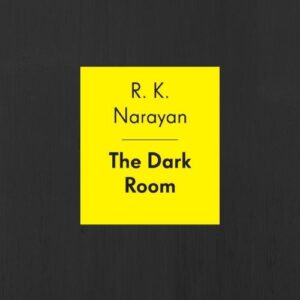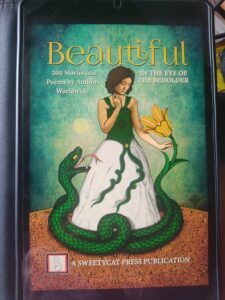Book: The Dark Room

Author: R.K.Narayan
Publication: Indian Thought Pub.
Pages: 162
Price: Click the Link
Author:
R.K. Narayan (1906-2001), born in Madras, is one of the most prolific Indian writers whose name is well known for his extraordinary competency in drawing the simple legends of everyday Indian life.
Introduction:
His novel, The Dark Room, first published in Great Britain in 1938, London, and in India in 1956, is a simple story veiling a profound message of the naked dichotomy of gender-biased society where women are buried inside the gloom of the darkroom.
Plot:
Savitri, the faithful wife from Indian mythology won back her husband’s life from the ‘Yama’, the king of death with her love and affection. Here Savitri is a dutiful housewife of Ramani, a whimsical, arrogant and selfish person. For him, a wife is just a property to be used or toyed with. Savitri is beautiful as per her husband’s satisfaction, submissive as per his demand. She silently tolerates all the inflictions, abuses, insults and criticisms of her husband.
But her tolerance and silence break one day when she discovers her husband’s relationship with his female employee, Shanta bai, and their night rendezvous.
‘I’m a human being,’ she said, through her heavy breathing. ‘You men will never grant that. For you, we are playthings when you feel like hugging, and slaves at other times. Don’t think that you can fondle us when you like and kick us when you choose’
Collapsed Cardhouse:
When the flimsy coat of fifteen years’ relationship between husband and wife washes away by the turbulent waves of Ramani’s passion for Shanta bai, Savitri cannot bear the humiliation. She protests. But for her husband, it is audacity on her part to say a word against her husband’s wish. He thinks of her as ungrateful and her pain, anguish, anger is meaningless treachery. When she decides to leave the house if he doesn’t terminate his relationship with that woman, Ramani does not hesitate to get her out of the house in the darkness of night
The Dark Room:
The ‘darkroom’ is a recurrent symbol in this novel. Savitri’s only solace and refuge was her self-confinement in the darkroom. At every abuse, torture, humiliation she escapes there. Facing the dark wall she fights her defeat.
-
“Mother had refused food and was still lying in the darkroom.”
-
“If you do that, I will not go out and Mother will remain in the darkroom forever.”
-
“Mother is coming out of the darkroom.”
The Truth:
R.K.Naratan excels in his practicality by making Savitri returned. Savitri attempts suicide as well as independence. But she fails. She has to return for her children, for her livelihood in her eternal darkroom, under the tutelage of her husband. She has no escape. But she realises the importance of education, she realises woman’s position in society, she realises,
“I don’t possess anything in this world. What possession can a woman call her own except her body? Everything else that she has is her father’s, her husband’s, or her son’s.”
The Ending:
The ending is simultaneously heartbreaking and artistic. Mari who saves Savitri from the water and gives her shelter in her helpless time is by profession a lock mechanic in day time and thief at night. Savitri finds him wandering on the road. She wishes to offer him food. But then she checks herself.
“Why should I call him here? What have I?”
“She sat by the window, haunted by his shining hungry face long after he was gone, and by his ‘Locks repaired!’ long after his cry had faded out in the distance.”
Language, narrative, character:
The plot is woven in simple and lucid language. We can assume the clear picture of a South Indian society from the detailed …of everyday family life. Like a skilful painter, he draws the minuet emotions and behaviours of human beings in perfect pastel colours.
Being a part of that society as well as being a detached observer he shows a withstanding grip over his plot and characters. Apart from the main characters the children and the office workers the milkman and the cook, or the factotum Ranga, the thief Mari, his wife Ponni all are portrayed excellently as well as with every human attribution.
Feminist views:
The book offers us a perfect theme that we can decipher and discuss from a feministic point of view. Here the male has no regret or shame for his behaviour rather, he is blaming his wife in the charge of ingratitude.
Savitri exclaims, “What is the difference between a prostitute and a married woman? – the prostitute changes her men, but a married woman does not; that’s all, but both earn their food and shelter in the same manner.”
Alvina’s Verdict:
Delicately woven by everyday life thread interspersed with tinges of satire, The Dark Room accurately portrays the time-worn dichotomy of male-dominated society where women are the sacrificial figures at the altar of patriarchy.







Pingback: Ahalya’s Awakening, Kavita Kane
Pingback: The Thousand Faces of Night, Githa Hariharan,Book Review,
Pingback: Girls Burn Brighter by Shobha Rao
Pingback: Beast of Burden, a story of a housewife, phoenixfabulist.com
Pingback: Uma, a short story,phoenixfabulist.com